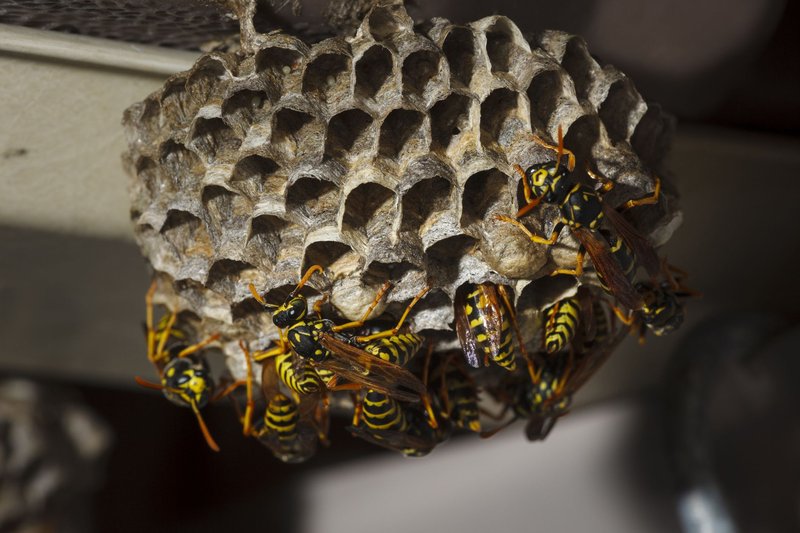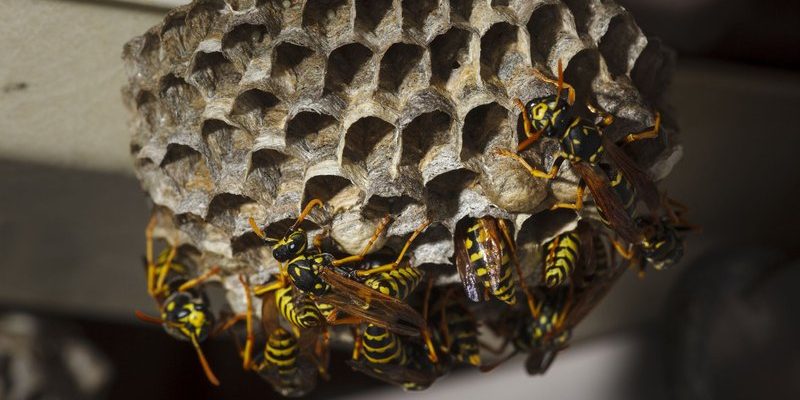
Paper wasps live in colonies, and how they communicate is essential for their survival. They rely on a mix of scents, sounds, and body language to share important information about food sources, threats, and their social hierarchy. Understanding these interactions gives us a clearer picture of their behaviors and shows us how even the smallest creatures have compelling stories to tell.
In this article, we’ll dive into the world of paper wasps—exploring how they communicate, interact, and work together to thrive in their environments. Whether you’re a curious nature lover or just looking to understand these buzzing beauties better, let’s unpack the intriguing social life of paper wasps!
The Communication Methods of Paper Wasps
Vocalizations: The Sounds of Social Life
Paper wasps have a unique way of talking to each other, and it doesn’t involve words like we use. Instead, they use a series of vocalizations—short buzzes and clicks that carry important messages. You might think of it as their version of a group chat. These sounds can indicate everything from calling members to the nest to alerting others about nearby predators.
But here’s the thing: Not all vocalizations have the same meaning. Some sounds may signal danger, while others might direct wasps to a newly discovered food source. This auditory communication creates a rich tapestry of interaction within the colony. Picture a bustling café where everyone is chatting away, each conversation helping them coordinate their activities and ensure everyone’s on the same page.
Chemical Signals: The Language of Scents
Aside from buzzing, paper wasps also communicate through chemical signals, or pheromones. Think of pheromones as invisible messages sent through the air. When a paper wasp detects something interesting, like a predator or food, it releases specific scents. Other wasps can pick up on these scents and respond accordingly.
For example, if one wasp senses a threat, it will release alarm pheromones that trigger a collective defensive response. It’s a little like sending out a group text to warn everyone of a sudden change in plans. As they respond to these chemical signals, they can band together to protect their colony from potential dangers or swarm towards a good food source.
The Social Structure of Paper Wasp Colonies
Hierarchy and Roles: The Queen and Workers
In a paper wasp colony, there’s a clear social structure. At the top of this hierarchy is the queen, who’s primarily responsible for laying eggs. Worker wasps, the non-reproductive females, take on various roles, from building the nest to foraging for food. It’s a bit like a small business, where everyone has specific tasks to ensure the colony thrives.
These roles are not just fixed; they can change based on the colony’s needs. If the queen gets injured or dies, a worker can sometimes take over her duties. This flexibility is vital for the colony’s survival. The communication between wasps makes it possible for them to adapt to new situations quickly. They’re constantly checking in with one another to see who’s available for specific tasks.
Cooperative Behaviors: Working Together for Success
Teamwork is at the heart of paper wasp colonies. Wasps actively help each other, whether it’s building their intricate nests or defending against intruders. Imagine a group of friends working together to pull off a big project; that’s exactly what these wasps do.
When a new nest is started, workers collaborate to find the right materials and assemble them. They share information about food sources, using both sounds and scents to coordinate their efforts. This cooperative spirit not only strengthens their community but also enhances their survival chances. After all, there’s power in numbers!
Nest Building: A Team Effort
Material Gathering and Construction
Building a nest involves a lot of teamwork and communication. Paper wasps use plant fibers, which they chew up and mix with their saliva to create a papery substance. It’s like crafting a home out of paper mache! Wasps identify suitable materials, and once found, they communicate to direct each other in gathering those materials.
While constructing the nest, you’ll find wasps actively working together, passing fibers around and integrating them into the structure. They might buzz at each other to signal that it’s time to move on to the next step. You can think of it as a well-rehearsed dance, with each wasp knowing its part and timing to create something beautiful.
Nest Defense: Protecting Their Space
Once the nest is built, the real teamwork begins. As soon as a paper wasp detects a threat, it rushes back to the nest and releases alarm pheromones. This action prompts others to join in defense. You can imagine it like a fire alarm going off—everyone knows it’s time to take action.
The buzzing sound becomes more intense as they prepare to fend off intruders. Their strong sense of teamwork and communication means they can efficiently protect their nests from threats, whether it’s another insect or a human getting too close. It’s a clear example of how effective communication is vital in maintaining their safety.
Challenges and Adaptations
Environmental Factors
Paper wasps face various challenges due to environmental factors, such as weather changes and food availability. When food is scarce, they need to communicate even more effectively to find new sources. This situation requires creative problem-solving and adaptability. Listening in on their conversations would reveal a lot about their struggles and triumphs.
For instance, if they discover a new food source, it’s not just about enjoying the feast; they need to share this information quickly. This urgent communication is crucial to ensure that the entire colony can benefit and survive. Their ability to adapt is a testament to their intelligence and social skills.
Human Interactions: Balancing Coexistence
As much as we might want to avoid them, paper wasps play a role in our ecosystems, too. Though our interactions can often lead to conflicts, understanding how they communicate can help us coexist better. Many people see them as pests, but they’re also pollinators and pest controllers!
By learning about their behaviors, like what attracts them and when they are most active, we can avoid unnecessary confrontations. If we respect their space and understand what makes them tick, we can often find a way to live alongside them harmoniously.
The world of paper wasps is a reminder of the vibrant and complex lives that even the tiniest creatures lead. Through sounds, scents, and cooperative behaviors, they build their colonies, protect each other, and find food. By studying these interactions, we not only gain insight into their lives but also appreciate the delicate balance of nature.
So, next time you see a paper wasp, take a moment to observe its behavior. You might just witness a miniature drama unfolding, complete with teamwork, communication, and an intricate social structure. Understanding how they navigate their world not only enriches our knowledge but also helps us foster a more respectful relationship with these fascinating insects.

